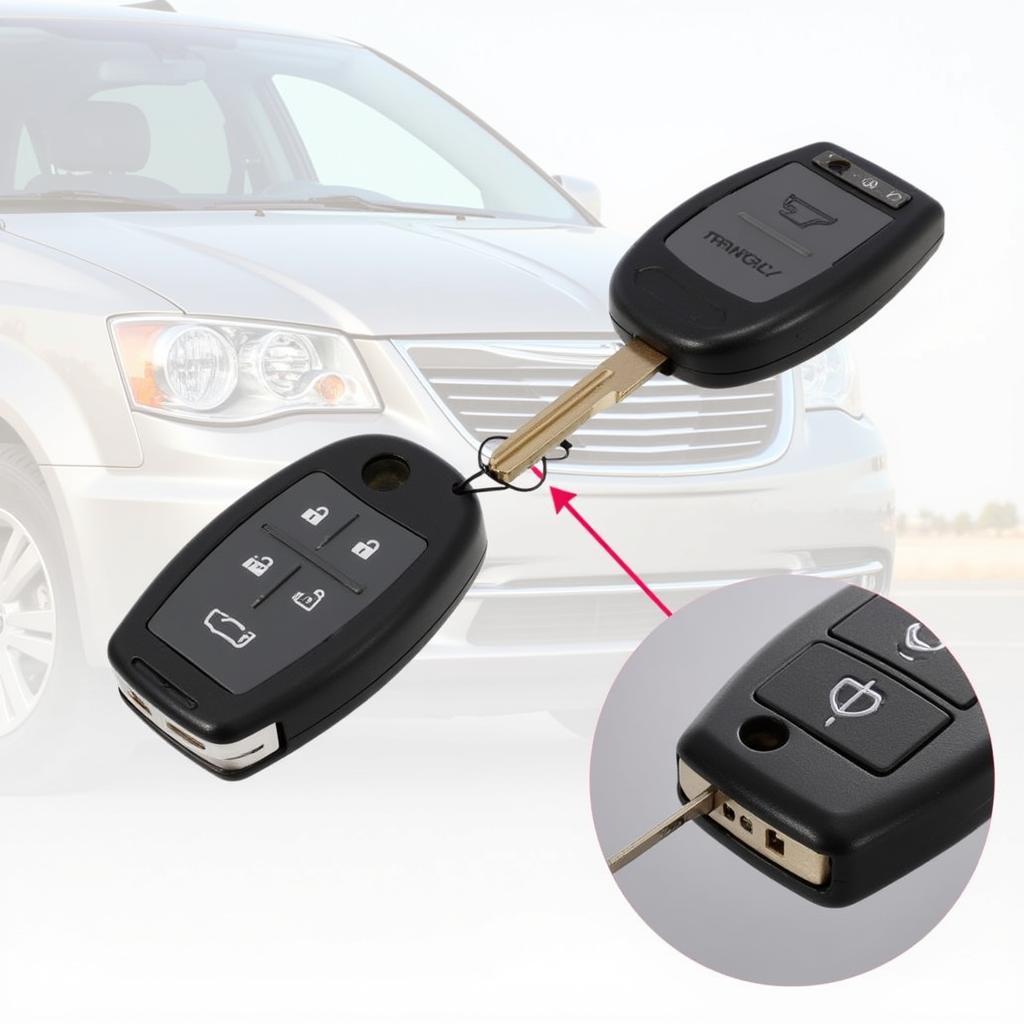A parasitic draw, also known as a key-off drain, can be a real headache for car owners. It slowly but surely drains your battery, leaving you stranded at the most inconvenient times. One of the most effective tools for diagnosing this issue is the power probe. This article will guide you through performing a parasitic draw test with a power probe, helping you pinpoint the culprit and get your car back on the road.
What is a Parasitic Draw?
A parasitic draw is a small amount of current that continues to flow from your car’s battery even when the ignition is off. This constant drain can eventually deplete the battery, preventing it from starting the engine. While some current draw is normal to maintain things like the clock and security system, excessive draw indicates a problem.
Why Use a Power Probe for a Parasitic Draw Test?
A power probe is a versatile tool that simplifies the parasitic draw testing process. Its ability to supply power, ground, and read amperage makes it ideal for identifying the source of the drain. Traditional methods often involve awkward multimeter connections and tedious fuse pulling. The power probe streamlines the process, allowing for quicker and more accurate diagnosis. Similar to how to unlock quick heal anti theft, understanding the power probe’s functions is crucial.
How to Perform a Parasitic Draw Test with a Power Probe
Before beginning, ensure your car is off, all accessories are turned off, and the doors are closed. You’ll also need a wiring diagram for your specific vehicle.
- Disconnect the Negative Battery Cable: This isolates the battery from the vehicle’s electrical system.
- Connect the Power Probe: Connect the power probe’s red clip to the battery’s positive terminal and the black clip to a good ground.
- Set the Power Probe to Amperage Mode: This allows the probe to measure the current flow.
- Connect the Power Probe to the Negative Cable: This completes the circuit and allows you to read the amperage draw.
- Interpret the Reading: A reading of over 50 milliamps (0.05 amps) generally indicates an excessive parasitic draw.
- Isolate the Circuit: Begin removing fuses one at a time, noting the amperage drop after each removal. When you remove a fuse and the amperage drops significantly, you’ve identified the circuit with the parasitic draw.
- Pinpoint the Culprit: Using your wiring diagram, identify the components within the affected circuit. This may require further testing with the power probe to isolate the specific component causing the drain.
Common Causes of Parasitic Draw
Several common culprits can contribute to a parasitic draw:
- Interior Lights: A faulty door switch or a glove box light that doesn’t turn off can drain your battery.
- Faulty Alternator: A malfunctioning alternator can draw power even when the engine isn’t running.
- Aftermarket Accessories: Improperly installed aftermarket accessories like stereos or alarms can contribute to a parasitic draw.
- Faulty Relays: A stuck relay can continue to draw power after the ignition is off.
- Glove Box or Trunk Lights: Sometimes, these lights don’t turn off properly, even after they seem to be closed.
Troubleshooting Tips for a Parasitic Draw
When dealing with a parasitic draw, remember these helpful tips:
- Consult Your Wiring Diagram: This is an invaluable resource for identifying the components in each circuit.
- Be Patient: This process can take time and requires a systematic approach.
- Check for Aftermarket Accessories: These are often the culprits in newer vehicles.
- Consider Professional Help: If you’re uncomfortable working with electrical systems, it’s best to consult a qualified mechanic. This is similar to seeking professional assistance for issues like how to unlock quick heal anti theft, which often requires specific tools and expertise.
Conclusion
Performing a parasitic draw test with a power probe can save you time and money by allowing you to pinpoint the source of the drain. By following the steps outlined in this article, you can effectively diagnose the issue and get your car back to running smoothly. Remember, a properly functioning electrical system is crucial for a reliable vehicle, and the power probe is a valuable tool in your diagnostic arsenal.
FAQ
- What is a normal parasitic draw reading? A normal reading is typically below 50 milliamps (0.05 amps).
- Can I perform this test without a power probe? Yes, but a power probe simplifies the process significantly.
- What if I can’t find the source of the draw? Consult a qualified automotive electrician for further diagnosis.
- Is it safe to disconnect the battery? Yes, but ensure you have any necessary radio codes before disconnecting.
- How often should I perform a parasitic draw test? Perform this test if you suspect a drain or experience battery issues.
- Can a bad battery cause a parasitic draw? No, a bad battery is a symptom of a parasitic draw, not the cause.
- What should I do if I find a faulty component? Repair or replace the faulty component to eliminate the draw.



